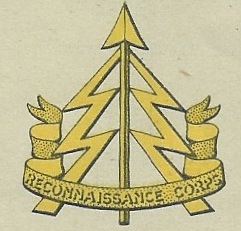
The 61st Division was an infantry division of the British Army raised in 1915 during the Great War as a second-line reserve for the first-line battalions of the 48th Division. The division was sent to the Western Front in May 1916 and served there for the duration of the First World War.

The 56th (London) Infantry Division was a Territorial Army infantry division of the British Army, which served under several different titles and designations. The division served in the trenches of the Western Front during the First World War. Demobilised after the war, the division was reformed in 1920 and saw active service again in the Second World War in Tunisia and Italy. The division was again disbanded in 1946 and reformed first as an armoured formation and then as an infantry division before final disbandment in 1961.

The 145th Infantry Brigade was a regional brigade of the British Army that saw active service in both the First and the Second World Wars, disbanding in 1943 and being reformed in the 1990s. The Brigade was renamed Headquarters 11th Infantry Brigade and Headquarters South East in October 2014.

The Reconnaissance Corps, or simply Recce Corps, was a service branch of the British Army, formed during the Second World War, whose units provided reconnaissance for infantry divisions. It was formed from infantry brigade reconnaissance groups on 14 January 1941.

152nd Infantry Brigade was a formation of Britain's Territorial Force/Territorial Army that was part of 51st (Highland) Division in both World Wars. From its origins in the 19th Century Volunteer Force it was based in Inverness and was composed of Highland battalions. It served on the Western Front in World War I, and after it was captured at Saint-Valery-en-Caux early in World War II it was reformed from its 2nd Line and saw action in North Africa, Sicily and North West Europe.

153rd Infantry Brigade was a formation of Britain's Territorial Force/Territorial Army that was part of 51st (Highland) Division in both World Wars. From its origins in the 19th Century Volunteer Force it was based in Aberdeen and was composed of Highland battalions. It served on the Western Front in World War I, and after it was captured at Saint-Valery-en-Caux early in World War II it was reformed from its 2nd Line and saw action in North Africa, Sicily and North West Europe. It continued serving postwar until the reduction of the Territorial Army in the 1960s.

154th Infantry Brigade was a formation of Britain's Territorial Force/Territorial Army that was part of 51st (Highland) Division in both World Wars. From its origins in the 19th Century Volunteer Force it was based in Stirling and was composed of Highland battalions. It served on the Western Front in World War I, and after it escaped from France early in World War II it was reformed from its 2nd Line and saw action in North Africa, Sicily and North West Europe. It continued serving postwar until the reduction of the Territorial Army in the 1960s.
The 158th Infantry Brigade was an infantry brigade of the British Army that served in both the First and Second World Wars, before being disbanded in 1968. Throughout its existence the brigade was assigned to the 53rd (Welsh) Infantry Division and was composed almost entirely of Territorial battalions from the Royal Welch Fusiliers.
The 157th Brigade was an infantry brigade of the British Army. The brigade fought in both the First and the Second World Wars, assigned to 52nd (Lowland) Infantry Division.
233rd Brigade was an infantry formation of the British Army in the First and the Second World Wars
The Liverpool Brigade, later 165th (Liverpool) Brigade was an infantry brigade of Britain's Volunteer Force that served during World War I with the 55th Division of the British Army. During World War II, again as part of the 55th Infantry Division, the brigade remained in the United Kingdom.
The 166th Brigade was an infantry brigade of the British Army that saw active service in the First World War and remained in the United Kingdom throughout the Second World War.

The 140th Brigade was an infantry brigade formation of the British Army's Territorial Army (TA) that had its origins in a South London Brigade of the former Volunteer Force. It served on the Western Front in the First World War and was recreated during the Second World War where it served only in the United Kingdom as a training formation.

The 141st Brigade was an infantry brigade of the Territorial Army, part of the British Army, that served in the First World War and remained in the United Kingdom throughout the Second World War.
The 213th Brigade was a Home Defence and training formation of the British Army during both the First and Second World Wars.
The 182nd Brigade was an infantry brigade of the British Army that saw active service in the First World War with the 61st Division. It remained in the United Kingdom throughout the Second World War, serving with the 61st Infantry Division.
The 184th Brigade was an infantry brigade formation of the British Army raise for service in both the First and the Second World Wars.
The 226th Infantry Brigade was a Home Service formation of the British Army that existed under various short-lived titles in both World War I and World War II.
The 144th Infantry Brigade was an infantry brigade of the British Army that saw active service in the First World War and again in the early stages of the Second World War before being reduced to a reserve brigade and remained in the United Kingdom for the rest of the war. In both world wars the brigade served with 48th Division.
The 139th Brigade was an infantry brigade of the British Army that saw active service in the First World War with the 46th Division. Later designated the 139th Infantry Brigade, the brigade also saw service with the 46th Infantry Division in the Second World War.





